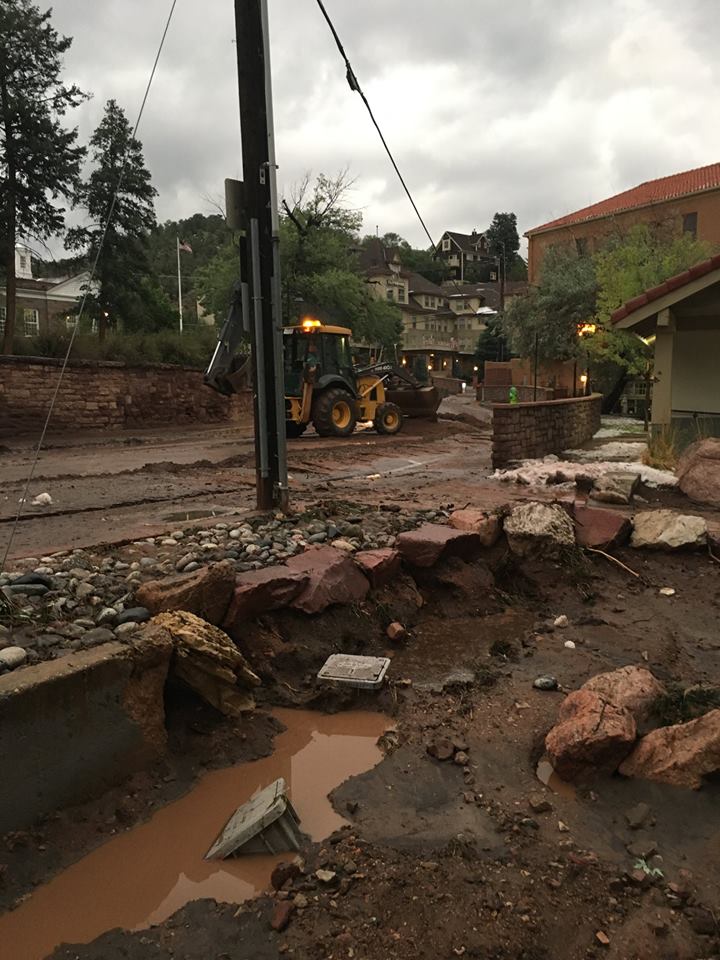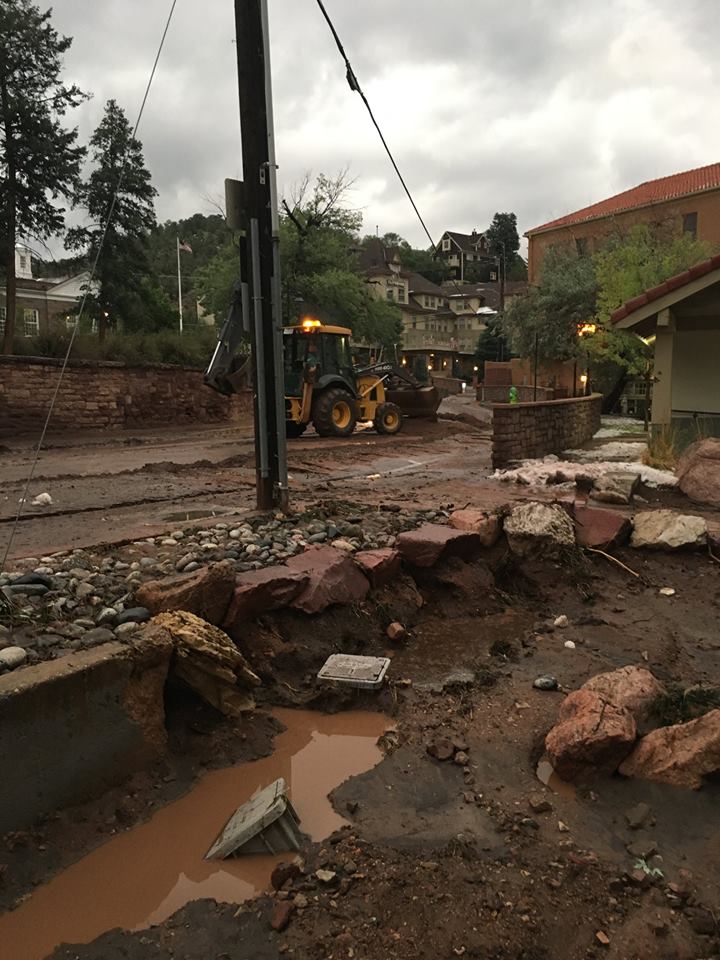

A woman died after rain from the latest round of strong Colorado storms flooded the suburban Denver basement apartment she was staying in to take care of a friend's cat, police said Wednesday.
People who live upstairs in the Englewood home called police Tuesday because they were concerned about their neighbor in the basement unit, police spokesman Chad Read said. The neighbor was not at home but officers found Rachael Marie Haber, 32, after searching in the murky water that reached up to the ceiling. No one else was in the unit.
Haber was unresponsive and taken to the hospital, where she died Wednesday morning.
The coroner said an autopsy showed injuries consistent with drowning, but further tests on how she died were still pending.
Read told The Denver Post the water in the neighborhood was knee-high when officers arrived.
"There was water in the front yards, backyards and a car actually floated down part of the street and ended up in front of the house," he said.
The rain also caused a sinkhole to open in nearby Sheridan, swallowing a vehicle, but the driver was able to get out in time. The muddy and mangled Toyota RAV4 was pulled from the hole on Wednesday.
In southwestern Colorado, water and debris closed roads near an area burned by a large wildfire north of Durango. The flooding stopped the Durango & Silverton Narrow Gauge Railroad, leading about 800 passengers to be bused back to Durango, The Durango Herald reported.
Another sinkhole opened earlier Tuesday south of Colorado Springs after flooding washed out a culvert following heavy rain there on Monday.
A vehicle fell into the culvert and when the Hanover Fire Department responded to the cave-in, their fire truck also fell into the hole. Both vehicles were removed early Tuesday morning.
Two firefighters and the driver of the first vehicle were taken to the hospital.
While the severe storms did significantly dampened the threat of wildfire, national fire and climatology experts said Wednesday the region is still grappling with the long-term effects of drought.
- Monsoons Are On The Way To Cool Down Temps, Douse Wildfires
- Will Climate Change Make Severe Weather The Norm in Colorado?
The experts focused on the situation across Arizona, Colorado, New Mexico and Utah, which is currently home to the largest swath of severe and extreme drought in the U.S.
"Most of the West is dry," said Nancy Selover, Arizona's state climatologist. "You've got dust storms across Interstate 10 in southern New Mexico, and we've got really dry range conditions. We've got lakes that are drying up. It's pretty ugly."
The region didn't see much winter snow or spring rains, and the summer rains that have developed so far haven't benefited everyone, Selover said. Monitors that track daily stream flows show parts of New Mexico and Colorado are still low, and several major reservoirs around the region are well below capacity, she said.
The price of hay has doubled in southwest Colorado as fires persist in other parts of that state. Ranchers across the states also have been forced to cull their herds.
On the fire front, the rains that have developed in recent weeks are helping to increase vegetation moisture levels. That means fires that do start are less likely to spread quickly, said Ed Delgado with the National Interagency Fire Center in Idaho.
The monsoon season is what he describes as the shut-off valve for fire season in the Southwest.
"When the monsoon kicked in in early July, we started to see a huge decline in fire severity, fire size and the number of fires," he said.
There are still dry areas in northern Utah and northwestern Colorado that fire managers are monitoring.
Overall, the fire center reported Wednesday that activity has picked up in other areas of the West as 14 new large fires were sparked. Most are burning in Oregon and Idaho, but crews also are working to get a handle on a lightning-sparked fire in northern New Mexico.
More than 17,000 firefighters and support personnel are working across the West, according to the center.








